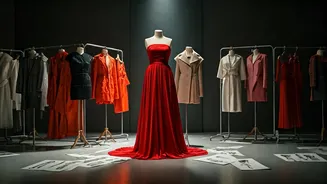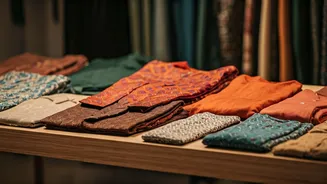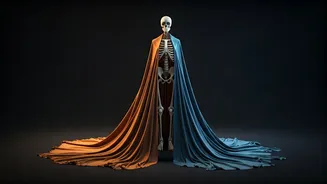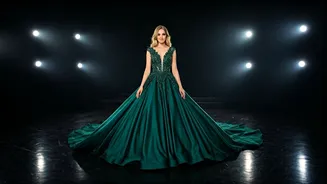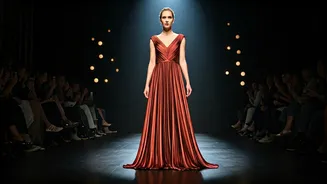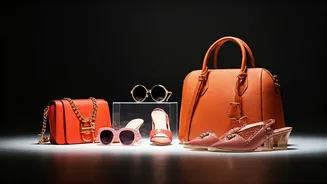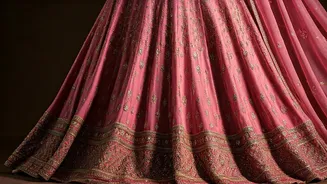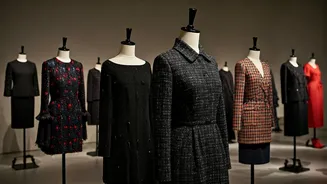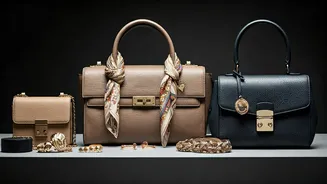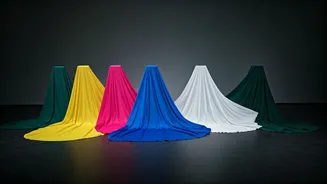Unequal Playing Field
The fashion industry, although often associated with creativity and innovation, doesn't always provide a level playing field for everyone. While women
are a dominant force as consumers, and their influence on style and trends is undeniable, a substantial gap still exists in terms of leadership and recognition for female designers. This disparity isn't a result of a lack of talent or ambition; instead, it is often due to the systemic hurdles and biases that women designers encounter throughout their careers. These obstacles can include a lack of mentorship, insufficient funding opportunities, and the unconscious biases of industry gatekeepers who often favor male designers. This can create a cycle where talented women find it challenging to climb the ranks, gain recognition, and establish their brands. Many have voiced concerns regarding the lack of visibility and support in a sector where they are integral to shaping its course and success.
Barriers to Entry
Navigating the fashion industry's complex landscape can be particularly challenging for women designers. One of the main hurdles involves securing financial backing. Getting access to adequate funding, whether from investors or loans, can be considerably tougher for female entrepreneurs compared to their male counterparts. This can hamper their ability to launch their own labels, scale their businesses, and compete with more established brands. The scarcity of mentorship opportunities also plays a vital role. Emerging designers, particularly women, often lack access to experienced individuals who can provide guidance, advice, and networking opportunities. Without such support, it can become isolating, making it harder to navigate industry challenges. Furthermore, unconscious biases can also make it difficult for female designers to get the recognition they deserve. These biases can influence decisions about who gets selected for high-profile projects, runway shows, and magazine features, thus limiting their exposure and brand growth.
Lack of Recognition
Despite significant contributions, female designers often don't receive the same level of recognition as their male counterparts. This is visible in media coverage, awards, and the overall narrative of the fashion industry. Magazine features, runway show invitations, and industry awards often favor male designers, which can create the impression that women are less important or innovative, which subsequently limits their visibility. This lack of visibility affects more than just their egos. It hampers their ability to attract investors, build brand awareness, and increase sales. When women designers are not celebrated, it creates a less inclusive environment, and signals to emerging designers that their achievements might go unnoticed. This constant underrepresentation perpetuates a cycle where women's contributions are diminished, thereby impacting their career trajectories and the industry as a whole. This issue highlights the urgent need for a shift in how the industry views and rewards female designers.
Impactful Solutions Emerge
The fashion industry is starting to see the value in addressing the gender imbalance and implementing meaningful solutions. Initiatives that promote female designers are gaining momentum, including targeted mentorship programs, networking events, and funding opportunities specifically for women-led businesses. These programs help break down barriers and equip aspiring designers with the skills and resources they need to thrive. Furthermore, creating visibility is a critical step. Magazines, fashion blogs, and social media platforms can highlight the work of women designers, showcasing their talents and successes. Award ceremonies and industry events are also starting to feature more women, providing a platform for recognition and celebration. Diversity and inclusion are becoming central themes within the fashion world, which is encouraging brands and organizations to create more inclusive cultures that value women's contributions and foster equality.
Future Fashion Equality
The future of the fashion industry is reliant on creating a more balanced and equitable environment for all designers. This will necessitate a continuous effort to challenge the status quo, tackle unconscious biases, and amplify the voices of women designers. Supporting women-owned businesses is crucial, with consumers consciously choosing to purchase from brands led by women. Mentorship programs must continue to grow, providing much-needed guidance, expertise, and support networks. Moreover, fostering a more inclusive industry means advocating for greater diversity at all levels, from design teams to leadership positions. As the industry evolves, the focus must be on recognizing and rewarding talent, regardless of gender. By embracing diversity and creating equal opportunities, the fashion industry can unlock its full potential, inspiring innovation and creativity and fostering a more dynamic and prosperous future.
